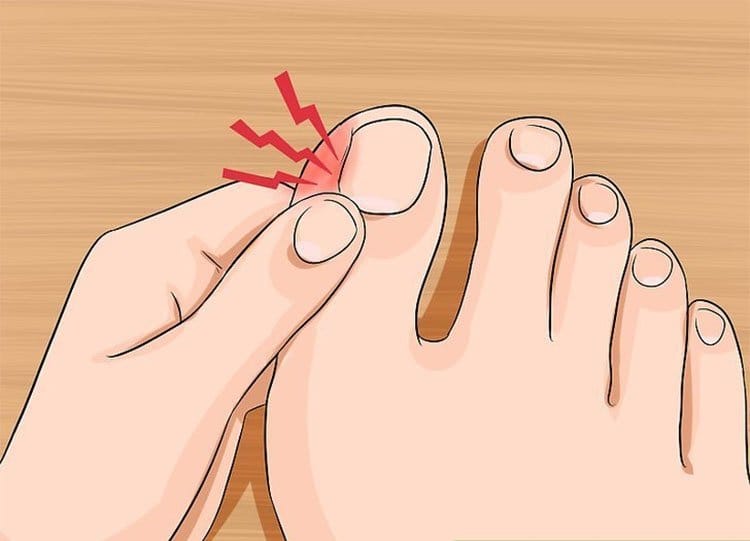Have you ever stubbed your toe by walking into a hard surface like a door, a table leg, or a chair leg? While the pain may feel excruciating (albeit temporarily), it often subsides within hours. If it doesn’t, however, you may be dealing with a broken toe.
A broken toe, also known as a toe fracture and a phalangeal fracture, are quite common. In fact, research shows that 3.6-8% of lower extremity injuries are toe fractures. Broken toes can result from injury or trauma sustained not only by the toes but also the foot. Certain activities, like sports or dancing, that require prolonged repetitive movements can also result in broken toes. This is more commonly referred to as a stress fracture.
What Are the Symptoms of a Broken Toe?
It can be overwhelming how such a small appendage can hurt so much, but if there’s a piece of good news, it’s that a broken toe isn’t usually deemed a medical emergency.
Your big toe (hallux) is made up of two bones while the rest of your toes are made up of three bones each. That’s 28 bones total, and when you have a broken toe, it usually means that one of those bones is broken.

You’ll know you have a broken toe if you observe any of these symptoms:
-
Pain when walking or running
-
Swelling
-
Discoloration and bruising (more often than not, the toe turn black and blue)
When to See a Doctor
Call your doctor right away if you suspect a broken toe regardless if the case is severe or not. The doctor will perform radiological imaging tests to assess the situation and rule out possible complications such as a compound fracture, infection, nail injury, and arthritis. The test results will likewise determine what type of treatment your doctor will recommend.
If the break isn’t severe, your doctor may prescribe a medicine to alleviate the pain. If your toe is broken all the way through or if it is dislocated, your doctor may have to put the toe back in its place. This will not involve surgery. However, your doctor will administer an injection to numb the broken toe so he can move the broken bones back together using his bare hands. He may give you a cast to make sure that the bones stay in place.
Your doctor may also suggest a few self-care tips you can do at home to help the broken toe heal more quickly.
Self-Care Tips for a Broken Toe
Administering first aid on your broken toe is important, especially if you’re unable to see your doctor right away. Here are some self-care measures you can apply:
-
Elevate the affected foot (preferably chest high) and protect the injured toe from further trauma.
-
Keep your foot elevated as you ice the affected area every hour with a 10-15 minutes interval.
-
If the swelling goes down after icing, there’s a chance that the injury isn’t severe. In this case, you can use a buddy wrap to immobilize the broken toe. For the buddy wrap, you’ll need a gauze, some cotton balls or a Popsicle stick, and surgical tape.
-
Place the cotton ball or Popsicle stick between the broken toe and the larger toe next to it.
-
Wrap the gauze around both toes, making sure the cotton ball or Popsicle stick is snugly in-between.
-
Wrap a surgical tape around the gauze to keep it in place.
-
-
If possible, avoid walking, standing, or putting weight on the affected toe for a considerable period. Let the toe heal for about two weeks.
-
If you cannot forego your daily activities, you can wear a specialized boot for broken toes that keeps the injured toe protected while it heals.
-
Make sure to wear comfortable shoes. Women should avoid wearing high heels, as these put too much pressure on the toes.
Keep in mind that the healing period of a broken toe depends on which toe is injured in the first place. Smaller toes heal quicker than your hallux or big toe since the latter supports most of your weight, aids in balance, and propels you when you walk.
Possible Treatments for a Broken Toe
If your broken toe is accompanied by bleeding, numbness, a tingling sensation, weakness, and deformity, you will need treatment that only your doctor can provide. If your doctor suspects a compound fracture or if there’s an open wound, which is usually sustained when the broken bone tears through your skin, your doctor will give you tetanus shots and prescribe antibiotics.
Your doctor may also have to remove the toenail of the broken toe in order to drain the blood that is trapped underneath. For extremely severe breaks, your doctor will recommend surgery and place screws or pins to hold the bones in place to facilitate healing.
Make sure to follow these tips. Once you can already walk pain-free, that’s the only time you can ease back into your normal routine.

